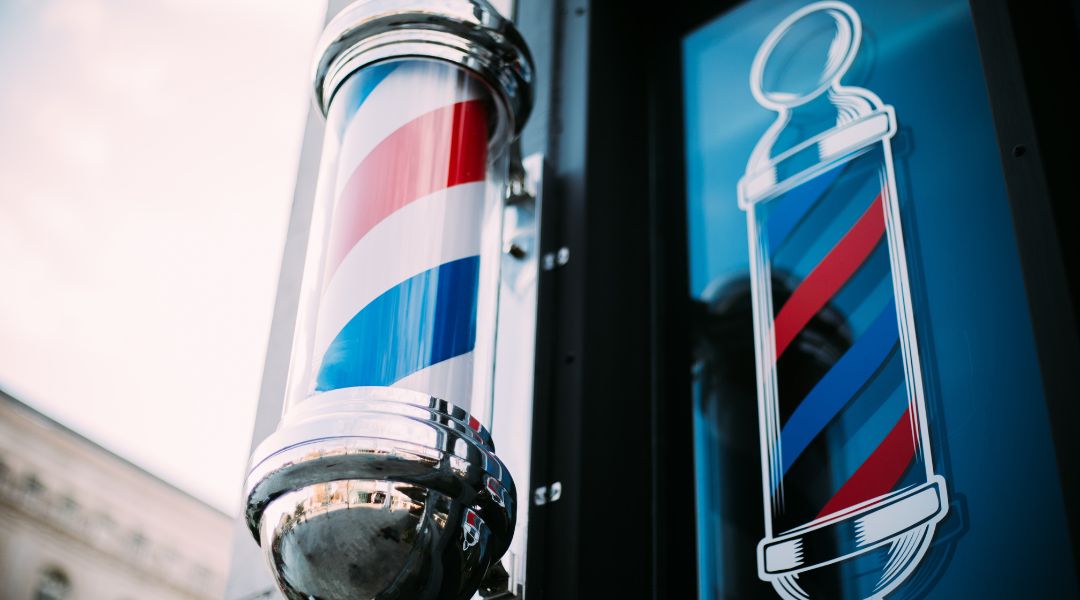Embarking on a career as a barber in Texas offers an exciting blend of creative expression and skill mastery. Your journey begins with attending an accredited barber school, where completion times vary based on program intensity but typically span between 9 to 15 months.
Acquiring your license follows, requiring you to pass practical and written exams after completing the mandatory 1,500 hours of training. This process not only equips you with essential techniques but also ensures compliance with state regulations for professional grooming services.
Understanding Texas Barber License Requirements
In Texas, to become a barber, you first need schooling. Choose between cosmetology or barber school based on what suits you. To get licensed, complete an approved program. This often takes about a year but can vary by institution.
You learn hair care basics and styling trends, which are vital for passing the licensing exams later. Remember: no license without education! After your coursework comes the real test time, and you must pass both practical and theory exams set by the Texas Department of Licensing and Regulation (TDLR).
Only then will they grant your initial license, paving your way into professional barbering in Texas, where opportunities await, including decent earnings potentials as well as manageable entry costs compared to some professions.
Duration of Accredited Barber Programs
In Texas, becoming a trained barber starts with education. Your time at barber school typically spans from 10 months to two years. The length can vary based on the program you pick. Some schools offer swift tracks.
With completion, you’re set for the state board exam, and your license awaits. Being a barber is rewarding. It’s low-stress with lots of human connection plus options galore, from big shops to cozy spots in town, and skills that grow as you do! Flexibility shines here: affordable fees meet easy-to-prep, while course breadth remains your choice.
Mastering Skills: Classroom vs Practical Hours
In Texas, you’ll split your time between learning in a classroom and getting real experience. You need both to master the trade. In class, expect theory on haircuts, shaving techniques, and hygiene practices. This is vital know-how for every pro barber.
But it’s not all books. Hands-on hours are key, too. They let you try out what you’ve learned; practice makes perfect, after all! Think of these practical hours as your craft’s proving ground.
You must log 1,500 hours to meet state requirements. A mix of both study styles ensures rounded skills before testing them under exam pressure or with actual clients at a job later on. Remember that each hour counts toward becoming an outstanding barber ready for success in this booming field!
State Exam Preparation Timeline
After you finish the 1500 hours of training, get ready to take your state exams. You have two: a written and a hands-on test. Pass these and pay for your license.
Remember, it’s good for just two years in Texas. Check official sites like TDLR to know when renewal is due. At Texas Barber College, we go beyond basic skills. You learn more than cutting hair. You build trust with clients and understand barber shop business essentials such as managing money or accounting basics. Our students don’t just pass tests. They get set up for real-life success in this craft we love so much.
Plus, becoming a barber opens doors. It can lead to owning your small place someday!
Apprenticeship Options in Texas
As you dive into Texas apprenticeships, consider the school’s reputation. A well-respected program teaches superior barbering skills and enhances job prospects afterward. Employers favor graduates from esteemed schools.
Look at available programs, too. Some provide basic cuts, while others train future instructors. Ensure your chosen apprenticeship includes your desired training for a robust skill set. Lastly, assess practical details: program duration, schedule regularity (daily or weekly), session timing (morning or evening), and location convenience. These influence your schooling choice significantly.
Choose wisely to ensure this step propels you forward in acquiring that coveted barber license efficiently.
Continuing Education and Renewal Cycles
Once you finish your barber training, the school will tell Texas exam folks. They’ll need to know so you can take the test; it has hands-on parts and question-answering bits, too. It tests what you’ve learned, both doing haircuts and knowing the theory behind them.
Remember, even after getting licensed as a barber in Texas, learning never stops! The state requires that barbers keep their skills sharp with ongoing education every two years. You must update yourself on new techniques or any changes in laws affecting how barbers work. It’s about staying fresh and compliant for your clientele.
Keep up-to-date if you want to stay snipping away legally here!
Expedited Paths to Licensure
In Texas, the journey to becoming a barber has been made more efficient with recent regulatory changes. Up until September 1, 2023, you can obtain your barber license with just 1,500 hours of instruction or with 300 hours of instruction coupled with an active Class A Barber certificate. This accelerated approach is a significant change from the traditional, longer training periods.
It’s crucial to note that all schools offering barbering and cosmetology courses must have approval from the Texas Department of Licensing and Regulation (TDLR) after September 1, 2023. This requirement ensures that the educational standards and curriculum align with the new state regulations.
At Texas Barber College, the training program for aspiring barbers typically spans 9 to 12 months for full-time students. This training period, effective as of 2024, not only imparts technical skills but also essential business knowledge vital for thriving in this industry. Commitment and dedication to the program are key, as they form the cornerstone for a successful and fulfilling career in barbering.

